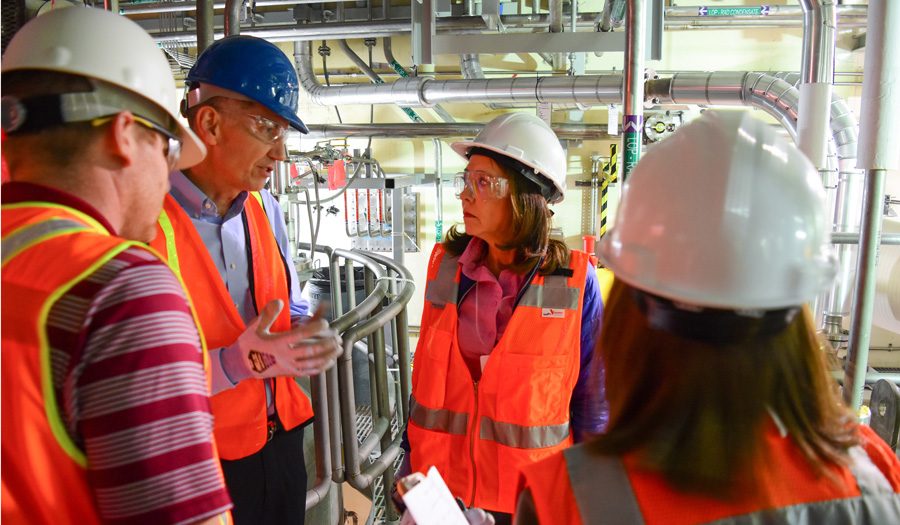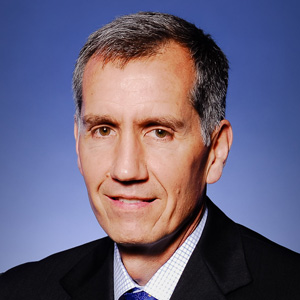
Home » Urgency, momentum progress at Hanford
Urgency, momentum progress at Hanford

May 16, 2019
By Brian Vance
A sense of urgency is building at the Hanford site as we get closer to delivering on our commitment to safely, efficiently and effectively treat tank waste and close Hanford tanks; continue to remediate waste sites and facilities; and reduce risk to our employees, the public and the environment.

As the manager of both the U.S. Department of Energy’s (DOE) Office of River Protection and Richland Operations Office, I am pleased with our momentum over the past year and expect our momentum to continue building.
This is a time of tremendous change and opportunity for the Hanford site, as we prepare to start tank waste treatment as early as 2022, about a year earlier than our consent decree milestone of December 2023. We are also shifting our operational culture to prepare for round-the-clock tank waste treatment operations, while also focusing on being a demanding and fair customer to our contractors; enforcing ethical standards and conduct; building and maintaining constructive relationships with Hanford stakeholders; and driving our performance to higher standards.
To foster this transition, in February I was named the acting manager for the Richland Operations Office in addition to my role as manager for the Office of River Protection. Under this single-manager leadership, we have an opportunity to drive positive change that safely delivers cost-effective cleanup, reduces risks and provides the best return on the taxpayer’s investment. This change, however, does not represent a recombination of the offices.
Our plan to treat the less radioactive tank waste, known as
direct-feed low-activity waste, requires strong teamwork between DOE and all of
the site’s contractors. Design is underway on a system called tank-side cesium
removal, or TSCR, which will remove cesium and solid materials – the
higher-level waste components – from the liquid tank waste, providing a
low-activity waste stream for vitrification in the Hanford Waste Treatment and
Immobilization Plant Low-Activity Waste Facility.
Understanding the status of older tanks and preventing
contamination that has already leaked from tanks in the past from moving deeper
toward groundwater are also priorities. The tank operations contractor has
completed integrity assessments on all 149 single-shell tanks and in 2018
constructed a surface barrier over SX tank farm,
to prevent precipitation from driving contamination in the soil deeper.
Near the Columbia River, we are at the halfway point of
transferring 35 cubic yards of radioactive sludge from the K West Reactor Basin
away from the river and expect to complete this significant achievement this
year. We are also making good progress on installing remote-controlled
equipment in a former nuclear laboratory north of Richland to excavate highly
contaminated soil beneath the 324 Building.
On the central plateau, lower risk demolition of the
Plutonium Finishing Plant has resumed, and we will work at a safe and
deliberate pace to ensure we are protecting workers, the public, and the
environment. Workers have finished filling a second waste storage tunnel near
the Plutonium Uranium Extraction Plant with grout to prevent a potential
release of contaminated material from a collapse.
Across Hanford, we expect once again to exceed our goal of
treating nearly
2 billion gallons of contaminated groundwater and removing tons of
contaminants, reducing risk to the Columbia River and shrinking the size of
contaminated groundwater areas.
However, even as we continue to make good progress, we also
are facing stark realizations regarding the schedule and cost to achieve this
cleanup.
Hanford receives about $2.4 billion annually, which enables
our more than 9,000 federal and contractor staff to safely advance our cleanup
mission. These staff are highly trained with unique skills and capabilities.
But with decades more to go our success lies in the next generation of cleanup
employees and leaders. Through engagement with our area colleges and
universities, the department and our contractors are helping to develop this
next generation.
I’d also be remiss if I did not mention the importance of our
community businesses and stakeholders, who continue to support our cleanup
efforts. Our prime contractors reported more than $785 million in
subcontracting last year, including over $500 million going to local businesses
and about $400 million going to small businesses.
I’m proud to say Hanford enjoys the
support of many stakeholders, and we don’t take that for granted. The recently
released Hanford lifecycle report showed a significant increase in the
estimated cost of future cleanup, which further demonstrates that new
approaches are needed for the mission at Hanford. We do not accept the status
quo and we look forward to continuing to collaborate with Congress, tribal
governments, regulators and Hanford stakeholders to change course and enable
our future success.
Across all of our projects, my role is to reinforce a sense
of deliberate urgency as we look to achieve a safe, affordable and protective
cleanup for the community and the American taxpayer, and I look forward to
discussing this more with you and hearing your input at our meetings throughout
the year.
For more information on progress at Hanford, go to www.hanford.gov.
Local News Hanford
KEYWORDS may 2019




